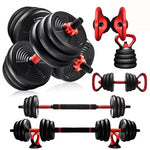5 Most Effective Frozen Shoulder Exercises For Quick Relief

Frozen shoulder. It is exactly what it sounds like.
Your shoulders become so stiff that you can barely move it.
Everyday activities such as combing your hair, putting on your clothes, and trying to get a bottle off the shelf – all become painfully difficult to do.
Studies show that around 2-5% of the global population is affected by frozen shoulder at some stage of their lives.
So, is there a cure for it? Unfortunately, no.
But frozen shoulder exercises and stretches are one of the main ways to get some much-needed relief.
In this blog, we’ll tell you everything you need to know about frozen shoulder and the best 5 frozen shoulder exercises for quick relief.
What is a Frozen Shoulder?
A Frozen Shoulder, also known as adhesive capsulitis, is a condition that affects the shoulder joint, causing pain and stiffness. The shoulder joint is enveloped by a connective tissue called the capsule. The capsule typically has flexible folds that adapt as the arm moves.

In a frozen shoulder, this capsule gets inflamed, causing scar formations called adhesions. These adhesions restrict shoulder movement, leading to pain when trying to move the joint.
You might like: 10 Effective Shoulder Exercises With Dumbbells You Can Do Anywhere
Symptoms of Frozen Shoulder
The main hallmarks of a frozen shoulder are
- Pain - A dull or aching pain in the shoulder that worsens when you try to move your shoulder.
- Stiffness - The shoulder becomes extremely stiff, thus reducing your mobility.

In most people, the frozen shoulder condition progresses through three stages:
Freezing Stage
During the initial stage, the shoulder pain can be quite intense especially at night or during activities involving lifting or reaching. Movement also begins to get restricted. The freezing stage typically lasts from 2 to 9 months.
Frozen Stage
In the 2nd stage, your shoulder becomes extremely stiff and your mobility gets severely compromised making it difficult to perform daily activities. You might experience a slight reduction in pain though. The typical duration of the frozen stage is anywhere between 4 to 12 months.
Thawing Stage
In the last stage, the pain drops considerably and the shoulder starts to regain some range of motion. The thawing stage could last between 5 to 24 months.
You might like: 8 Awesome Resistance Band Shoulder Workouts
Causes of Frozen Shoulder
While the exact causes of frozen shoulder are not properly understood, here are a few potential causes and risk factors:
1. Inflammation
The primary trigger for a frozen shoulder is inflammation of the shoulder capsule that could result from overuse, an injury, or other medical conditions.
2. Prolonged Disuse
People who keep their shoulders immobile for an extended period due to an injury, surgery, etc. are at a higher risk of developing a frozen shoulder.
3. Systemic diseases
People suffering from certain diseases (such as the ones listed below) seem to have a greater chance of getting a frozen shoulder:

- Diabetes - About 10-20% of diabetic people get it.
- Overactive thyroid (hyperthyroidism)
- Underactive thyroid (hypothyroidism)
- Cardiovascular disease
- Parkinson's disease
4. Age and Gender
The condition seems to be more prevalent in people between the ages of 40 and 60. Additionally, women are more prone to develop a frozen shoulder than men.
5. Previous Shoulder Injuries
People who have experienced previous shoulder injuries, surgeries, or trauma are at an increased risk of developing a frozen shoulder.
You might like: 10 Extremely Effective Side Delt Exercises You Can Do At Home
Top 5 frozen shoulder exercises for quick relief
1. Pendulums
One of the top 5 frozen shoulder exercises for quick relief, pendulums are great for relaxing your shoulder and neck muscles and contributing to the passive range of motion of the shoulder joint.
Variation 1: Back and Forth pendulum
How to perform
- Place your unaffected hand on the corner of a table for support. (Let’s assume it’s your left hand)
- Place your left foot in front of the right and let your right arm hang down.
- Now bend your knees and start rocking your body back and forth as shown in the video such that your right arm is also moving along with your body. (Ensure that you’re not actually rocking your arm but your arm is just moving along with the rest of the body.)
- Go back and forth around 10-15 times.
Variation 2: Side-to-side pendulum
How to perform
- Set up in the same way as variation 1.
- This time place your legs apart and your right arm hanging down as shown in the video.
- Now bend your knees and start swinging your body side to side such that your arm is also moving along with your body.
- Swing side to side around 10-15 times.
Variation 3: Circular pendulum
How to perform
- Set up in the same way as variation 2.
- This time move your hips in a circular pattern so that your arms are also moving along.
- Do this 10-15 times in the clockwise direction and then repeat in the anti-clockwise direction.
Variation 4: Weighted pendulums
How to perform
- Set up in the same way as all the above variations.
- The only difference is you’ll be holding a lightweight dumbbell (0.5 to 1 kg) in your hanging arm while performing the pendulums.
2. Finger walk
Next on the list of 5 frozen shoulder exercises for quick relief is the finger walk. This easy frozen shoulder stretch is safe and gentle on your shoulder joint and is perfect for those looking for a low-impact frozen shoulder exercise.
How to perform
- Stand away from a wall about half an arm’s length away.
- Place two fingers of your affected arm on the wall at waist level.
- With your elbow slightly bent, slowly walk your fingers up the wall.
- Keep going as far as you comfortably can until you feel a slight restriction in your shoulder.
- Slowly drop your arm down and repeat 10-15 times.
3. Active external rotation in a side-lying position
What makes this active external rotation exercise one of the top 5 frozen shoulder exercises for quick relief? This frozen shoulder exercise encourages your shoulder to move through the full range of motion and also targets your rotator cuff muscles that help improve shoulder stability.
How to perform
- Lie on your unaffected side with your head resting on a pillow.
- Bend the elbow of your affected arm to 90 degrees at the side of your body.
- Hold a lightweight dumbbell in your affected hand (around 1 kg).
- Slowly raise your arm as far as you can comfortably go.
- Now slowly bring your arm back down.
- Repeat this process for 10-15 times.
4. Towel tension pulls
One of the best 5 frozen shoulder exercises for quick relief, towel tension pulls can reduce the stiffness in your shoulder joint by improving the blood flow to the area and giving you frozen shoulder pain relief.
How to perform
- Sit on a chair with your shoulders rolled down and back.
- Hold a towel or a resistance band slightly more than shoulder-width apart and let your hands rest on your knees.
- Now inhale, pull the towel apart as you lift your arms. There should be sufficient tension in the band or towel as you do so.
- Keep going up as far as you can comfortably go.
- Exhale, and slowly lower your arms back down.
- Repeat this for 7-10 times.
5. Seated resistance band row
Last on the list of top 5 frozen shoulder exercises for quick relief is the seated resistance band row. This effective frozen shoulder exercise helps in reducing shoulder pain and also strengthening the upper back muscles which leads to better stability in the shoulder joint.
How to perform
- Sit on a chair and loop a resistance band around the soles of your feet. Your feet should be in an incline position with only your heels resting on the ground.
- Grab the other ends with both hands. There should be slight tension in the band even in this starting position.
- Keep your thumbs in an upward position and your elbows close to your sides.
- Now row the band up until you feel the squeeze in your shoulder blades.
- Pause for a moment and then lower the band back down.
- Repeat 10-15 times.
How Can You Prevent Frozen Shoulders?
Here are a few preventive measures that you can take to lower the risk of a frozen shoulder.
1. Make shoulder mobility a priority
Maintain shoulder mobility and keep the stiffness at bay by regularly practicing frozen shoulder exercises and stretches such as shoulder rolls, wall angels, thread the needle, child’s pose, etc.
2. Avoid Prolonged Immobilization
Recovering from an injury or surgery? Don’t keep your shoulders out of action for too long and start gentle range-of-motion exercises as soon as it is safe.
3. Warm-up Before Physical Activities
If you’re planning for a weightlifting or a sports session, make sure you warm up to avoid placing any sudden strain on your shoulder joints. This could further lead to inflammation and a frozen shoulder in extreme cases.
4. Avoid Overexertion
Go easy on your shoulder joints by avoiding repetitive or excessive overhead movements.
5. Seek Prompt Medical Attention
Experiencing a nagging shoulder pain that is worsening over time? Do yourself a favor and seek medical attention ASAP. Early detection and treatment could help prevent the progression of the condition.
You might like: 7 Best Exercises To Do Everyday At Home To Stay Fit
Conclusion
If you suffer from a frozen shoulder, don’t lose hope. While it might take a while for you to regain your full flexibility, the key is to remain patient and keep practicing these effective frozen shoulder exercises.
Discover a new world of pain-free movement with these 5 frozen shoulder exercises at home and get frozen shoulder relief instantly!







Leave a comment